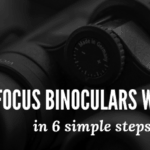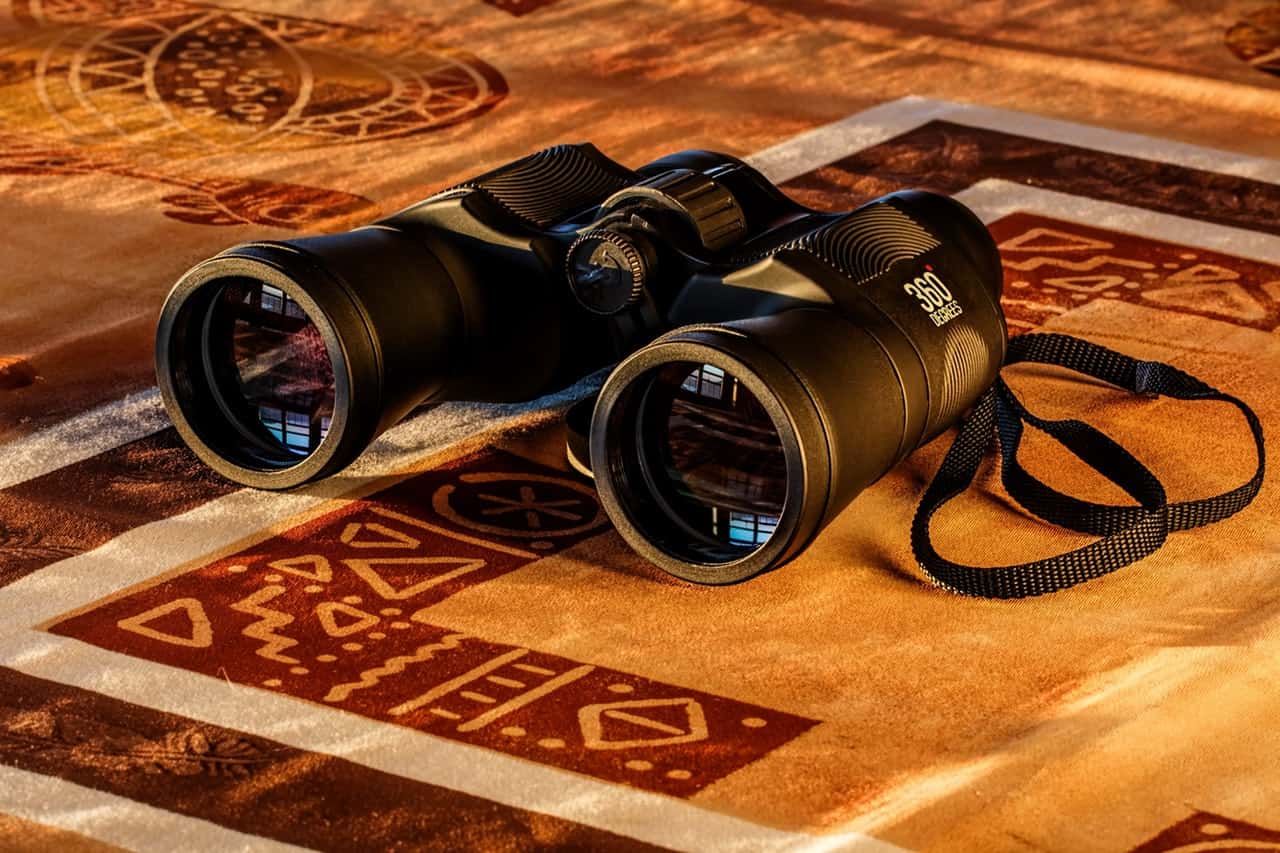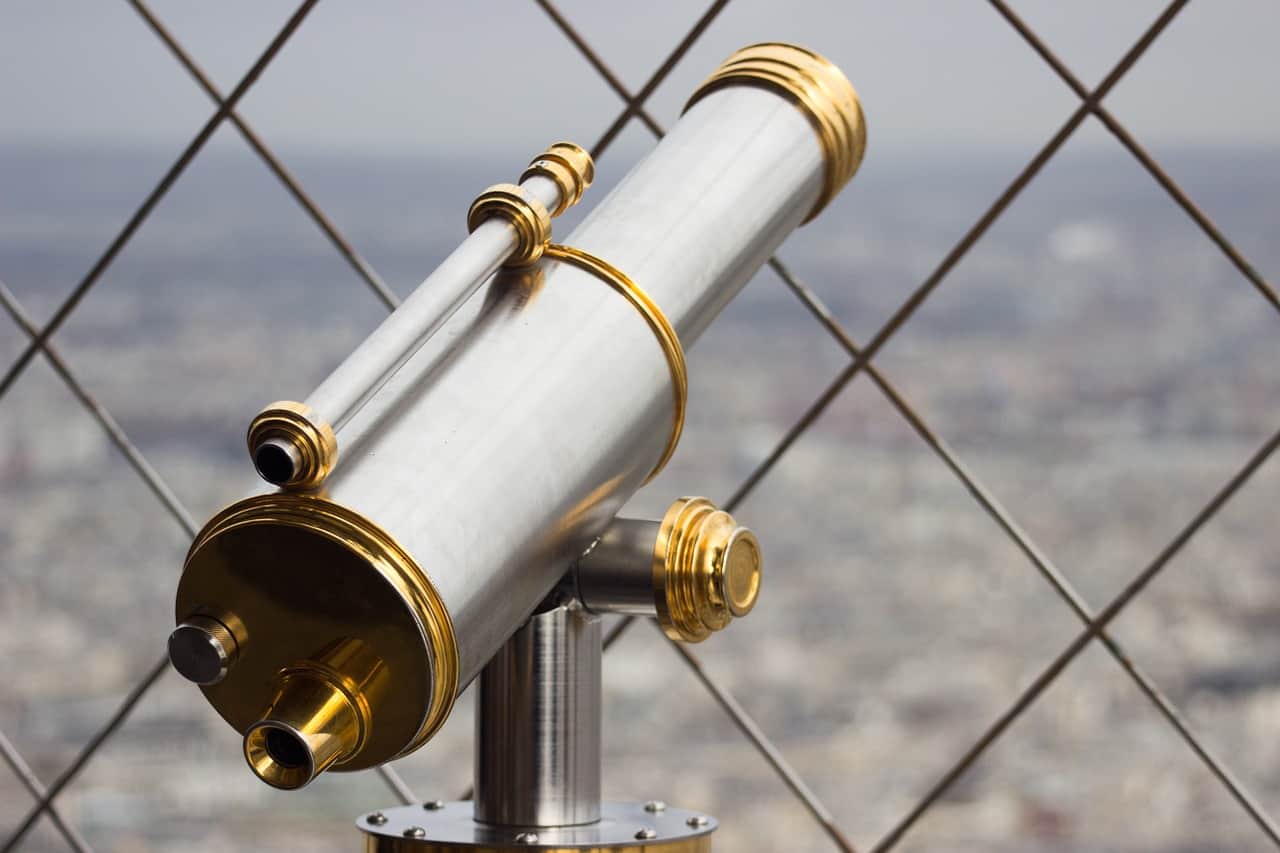Not being able to focus on the minute details of your favourite object can be very frustrating. Double vision problem in binoculars happens due to numerous reasons i.e. mishandling, carelessness etc. but don’t worry much.
Because the sole objective of this guide is to tell you how to fix double vision in binoculars and after having read this article you will definitely be able to fix the double vision problem in your new and old pair of binoculars.
Fixing optical problems in binoculars isn’t as simple as adjusting the focus of cameras. Because the lenses are very delicate and prone to getting destroyed if you operate on them without having an insight into all the pros and cons.
Double vision in binoculars occurs when they are out of collimation (a term used to indicate direct entrance and exit of light through both lenses). There is a situation when the path which light follows may get distorted resulting in a different image from two sides.
Also read: Everything you need to know about binoculars [explained with an epic infographic]
Fix binoculars double vision and collimation issues video tutorial
How to Avoid the Double Vision Problem?
Before digging deep into how to fix binoculars with double vision, let us discuss the ways to avoid it.
#1 Don’t think you are a Pro mechanic
In most cases of loss of collimation, the main reason is the person who tried to disassemble and then re-assemble the binoculars. Although you are free to deep clean, rotate the focus knob and adjust the strap of your binoculars. But that doesn’t mean you can play with the delicate parts i.e. lenses and prisms.
Aligning binoculars prisms and collimating lenses are very difficult and tricky processes. And to avoid any damage, you must not do experiments on your binoculars.
Because lenses, once disassembled, are very hard (nearly impossible) to be placed back in their original spot.
#2 Take care of your binoculars
It isn’t much you can do to avoid de-collimation of your binoculars except protecting them from mishandling. Excessive falling and taking them along in rough-tough environments are the main causes of problems in them.
To avoid the bothersome of fixing double vision (and in extreme case buying a new pair) you must ensure that you take care of your binoculars (especially lenses).
How to Fix Double Vision in Binoculars?
As I already told you the double vision occurs due to a disturbance in way of light. There are two places which are the basis of this de-collimation. One is in the lenses and other is inside the binoculars prisms.
Firstly let’s learn about fixing the lenses and collimating them!
Fixing double vision in binoculars is very tricky and complicated. The process involves disassembling of the whole device and then collimating the two lenses.
However, I am writing this guide to reduce the complexity of the fixing process. Bear with me and figure out some simple methods of collimating lenses at home.
The process is divided into 3 sub-categories. Let us start unravelling them without any further ado:
Step 1 Gather the essentials
Just like any other fixing process, you must start by gathering the essentials you will be needing. Here is a small list of tools you need:
- Screwdrivers (small drivers which will aid you in opening tiny screws)
- Scale
- Tape
- Cardboard
- Black marker
- Penknife (the one with an extremely pointed tip)
- Scale for measuring
- Your binoculars (obviously)
Step 2 Start fixing
As I already stated de-collimation occurs when the path of light is altered either due to the lens itself or due to misplaced screws.
Firstly you should determine which of the lenses has the most problem. Now the question arises how you can check which of them is in the worst state? Let me help you with that too!
- Take out the cardboard, scale, and marker which I asked you to keep near you.
- Draw a plus sign (+), both lines should be of 12 inches.
- Mark all the inches from 1 to 12 on the line you just drew and you are good to go.
- Now hang that cardboard with a tree, a stand or a wall (whichever is feasible for you) on a distance of 100 meters (or less).
- Stand straight and focus on the plus sign with your binoculars.
- This whole process will determine how much distortion is present in your lenses.
- Focus on the centre and see if small lines on the cardboard are both at exactly the same distances.
- Because if your one lens is de-collimated you will see the line in it is different from others. And if both lenses need re-collimation both of them will be oddly distanced (say one is in the extreme right and other is left).
After determining the level of damage, it’s time to uproot the entire problem. Take the screwdriver and start loosening lens screws.
- If your screw isn’t visible, you can remove the upper layer with help of a cutter and can access the screw.
- Remove the lens, clean it gently with a dry wipe and start placing it back in.
- As double vision happens when lens diverges from the centre to either corner, you will have to be careful in re-locating the lens. If it is still not in the exact centre, you will have to repeat the whole process.
- Don’t do hurry in placing back all the screws, first tighten the lens screws and start focusing on the plus sign you’ve used as a target. If it is alright on both sides it means you have succeeded.
Even if there is slight distortion, no problem because now you are aware of screws and joints and you can fix it then and there.
Now (after testing the accuracy) start closing the screws. Be conscious in tightening them though.
Step 3 Test the results
After you are done with the disassembling and re-assembling errand, now it’s the time to check the outcomes. Repeat the same old process of checking the distance of small lines from the centre of the cardboard.
If you don’t feel any discrepancy amongst the two sides of your binos, you are all done now!
How to Align Binocular Prisms at Home?
Now, this is something really tricky and requires a lot of time and patience. Calibrating prisms (they are covered with rubber or metallic coating) will take more time than lenses.
- First of all, figure out of the problem is surely in prisms (because if you touch them without any fault, you are at loss)!
- You can do that by focusing your binos at a star because if your prisms are de-collimated you will see two stars (when there is actually one).
- Now next step is to locate the screws which control your prism, mostly prism screws are at round sides, unlike lens screws which are at the top.
- Let’s presume the problem is in your left prism, and you see the object lower than the right one.
- Start working on the left screw and (like the other method) keep checking it by testing your target.
- If the fake star you see is lower and far, start tightening the screw.
- And it will start moving upward and closer to the star you are seeing on the right side of your binoculars.
- Similarly, if the pseudo-object is at a higher place than the real object, you will have to loosen the screw.
- Doing this will move the objects closer.
The exactly collimated binoculars are those in which light enters from two sides (obviously) but after passing through the prism it leaves in the form of one beam. And you see one clear object.
If you happen to see a discrepancy i.e. two objects, or different imagery from two sides, it means that this is high time you should collimate your binos.
Do that with any of the above two methods depending upon the fault. You can pinpoint the fault by either focusing on one point or by creating a target having equidistant lines on two sides.
Here are a few tips you should follow if you don’t want to mess up with your binoculars:
- If your binoculars are new and are under warranty, then you should definitely opt for expert repairing.
- However, if your pair is extremely old and you can’t find any guide or manual for their fixation, don’t worry because the processes I wrote for you will be of great help (I am sure)!
Conclusion
Binoculars are a good investment, and they require maintenance to keep working. Your money is of no use if you can’t see the small stars or see pseudo stars due to a fault in your binos. All you need is learn how to fix binoculars with double vision and you are all set.
As fault can occur at any time (although you should try to avoid them) you should be prepared to fix your precious gadget instead of replacing it or getting it fixed by paying more dollars.
I am quite sure you will now be able to pinpoint the fault in your binoculars and will now solve it on your own. Good luck!

An optics enthusiast – I love bird watching as well as wildlife. Originally from South Africa, I moved to the UK at a young age. I love reviewing the latest binoculars as well as traveling. I work as a comms consultant during the day. My plan is to travel across the world so building up to that goal.






